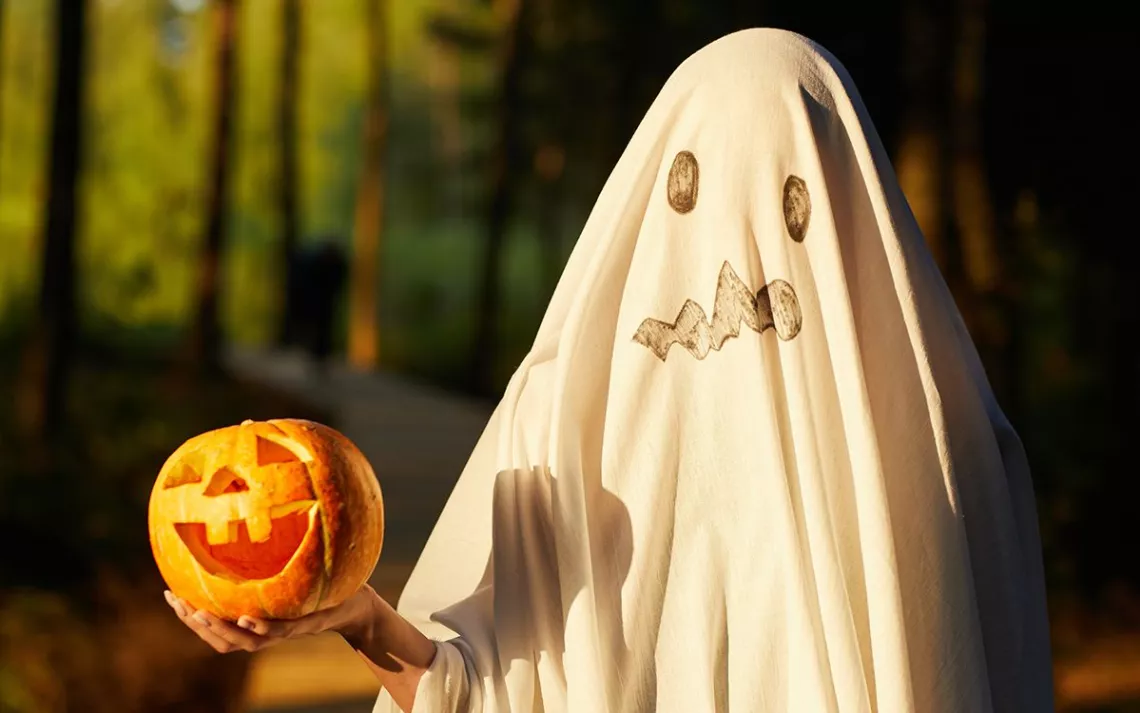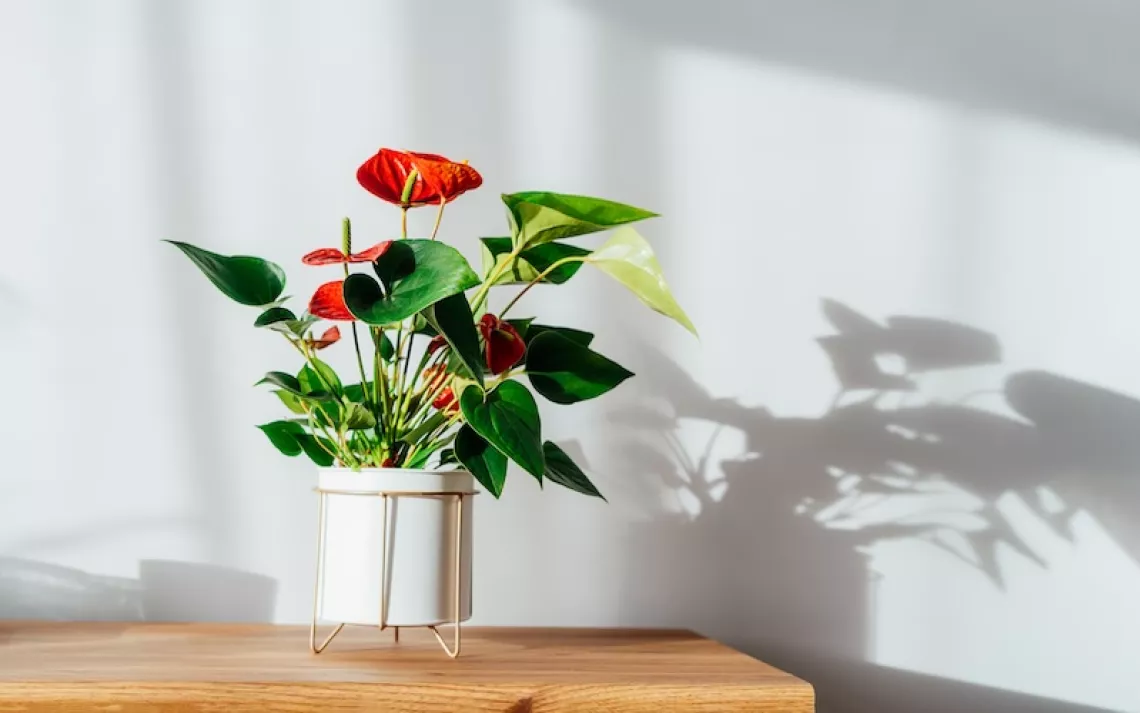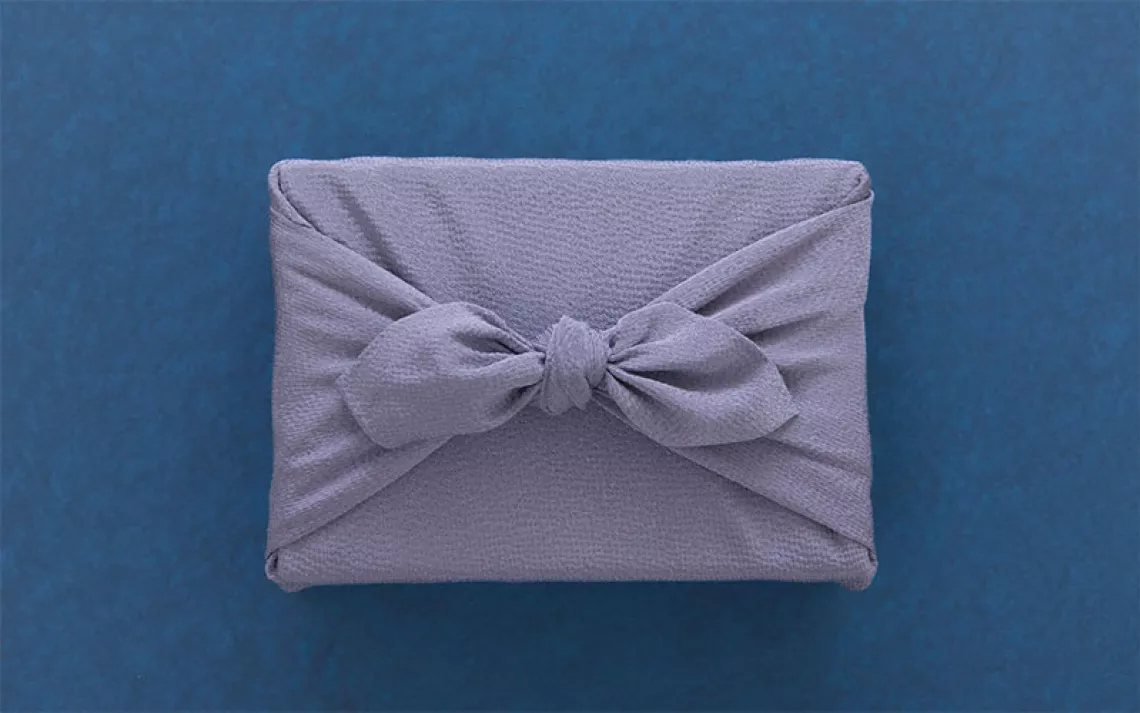20 Ways to Fete a Plastic-Free Halloween
What's scarier than goblins and ghosts? Petrochemicals and waste.
Want to hear the spookiest true tale we’ve heard recently? Plastics are on track to contribute more climate-change-causing emissions (to the tune of at least 232 million tons of greenhouse gases annually) than coal plants by 2030, according to a new report out of Bennington College. The reason? As fossil fuel companies seek to recoup falling profits, they’re increasing plastics production.
The stats left me feeling less than festive this Halloween. My all-time favorite holiday has become a plastic pollution nightmare. Research from Hubbub, a UK-based charity, found that an estimated 2,000 tons of plastic waste—the equivalent of 83 million plastic bottles—gets generated from “disposable” Halloween costumes in a single year. It isn’t hard to discern the problem—most of the costumes, candy wrappers, decorations, and party favors are made from petroleum-based plastics.
All Hallows Eve can be all the more awesome without plastic. Take Random Acts of Green, a Canadian social enterprise that for the past six years has hosted a HallowGreen Challenge that encourages classrooms, businesses, and offices to take on challenges like “Bring an item back from the dead. Repair it” and “Bare Bones: Buy fruits and veggies without plastic.”
Here are tips for how to have a plastic-free Halloween that is not only easier on the environment but also easier on your pocketbook.
Costumes
Most store-bought costumes are made with synthetic fabrics like nylon and polyester, both of which tend to shed microplastics when washed. The other major issue is the production of these costumes, which results in plenty of chemical run-off. (Polyester, after all, is made from fossil fuels.) Plus, many of these single-use costumes (which are larger in size than most single-use plastics) are crafted by workers in poor conditions. Forage or make your own and you’re almost guaranteed to end up with a better, longer lasting, and more memorable costume. Here are some pointers.
- Get thee to a thrift store. Goodwill stores often save their weirdest donations throughout the year to haul out during October. You can also find props galore (think wicker baskets and candelabras you can spray-paint black). Don’t have time to forage for days? Keep it simple—all that a great ninja costume takes is a balaclava and black duds. You can also pair a bright yarn wig with some old rags sewn together (the messier the better) to become Raggedy Ann or Andy. A ghost get-up, naturally, requires just a white sheet. (Alternately, if you’ve got time to cut old white clothes and sheets into ribbons, you can wrap them around yourself and become a most authentic-looking mummy.) Where’s Waldo fans need only a striped shirt and hat.
- The most carbon-neutral option of all is to ransack your own home for materials you can reuse, such as old tees, buttons, wrapping paper, bottle caps, and pots and pans. Need ideas for costumes that throw all your finds together? Google, YouTube, and Pinterest are your best friends. Now grab some scissors, glue, needle, and thread, and get crafting.
- Most of us have a costume or two kicking around that we’ve already debuted and don’t know what to do with. Avoid buying new single-use costumes by getting your friends and family together to do a costume share—mix and match unique pieces into inventive costumes.
- Consider renting a costume. Plenty of stores and online rental services offer costumes for rent.
- Shirk plastic masks and paint your face. But beware of most Halloween makeup, which is cheap and filled with a ton of synthetic ingredients and heavy metals like lead. Try Natural Earth Paint instead.
Treats
When it comes to treat-or-treaters, it’s hard to find affordable options that don’t come in plastic wrap. You could always make taffy apples or cookies carved into spooky shapes for at-home treats, but with COVID-19 still around, you probably don’t want to pass out homemade goodies. Here are some sweet tips.
- “Embrace Fair Trade Certified chocolate that’s wrapped in paper and foil, like Chocolove,” suggests environmental journalist Candice Batista. “For fruitier candy, choose an organic option like YumEarth.
- If you must pass out traditional candy, remember that Hershey's Kisses are wrapped in aluminum foil—you can always pass them out with a PSA that if trick-or-treaters ball up the wrappers and collect them in an aluminum soda can, they can be recycled. Batista suggests checking out these Chocolate Pumpkin Balls from the Natural Candy Store too. For cheaper plastic-free options, choose candy that comes in cardboard boxes—like Dots, Nerds, and Raisinettes—which can be recycled or composted.
- You could also buy bulk-candy in grocery stores (we’d recommend opting for sweets that don’t contain industrial palm oil) and wrap them in your own packages made from brown paper bags or leftover fabric.
- If you’re OK with maybe not winning the neighborhood popularity contest this year, you could always hand out seed packets and inspire budding gardeners.
Decor
- Jack-o’-lanterns are not only the most iconic form of Halloween decor but also the most eco-friendly. Keep in mind that most decorative pumpkins are not consumed after being used as decor, which contributes mightily to food waste and thus atmosphere-frying emissions. So roast those seeds for a healthy snack, keep or freeze the flesh to use to make soups and tasty baked goods, and once the calendar strikes November, make sure your pumpkin carcass ends up in a compost bin rather than a landfill. Don’t have one, or live in a city that doesn’t collect organic waste? Batista suggests calling nearby farms or community gardens to see whether they collect pumpkins. “You can also upcycle them into a bird feeder,” Batista adds. Consider growing your own gourds for next year. Not so into gourds? Take a cue from Alex Mastin, founder and CEO of Home Grounds, who turns oranges into DIY mini pumpkins. “They’re plastic-free, fun, and tasty to make, and once you add a tealight inside, make your entire home smell incredible.” Simply carve the oranges like a regular pumpkin (and of course, compost the day after Halloween).
- Siphon some autumnal bona fides, suggests Chris Mammen, founder of BetterGoods, by strolling through a park or woodland collecting colorful leaves and twigs. “Then store them in a mason jar or other repurposed jars and light candles behind them to create intriguing shadows.”
- Create decorative ghosts with old bedsheets—tie a string around one end and stuff the “head” part with old newspapers.
- Collect the paper waste lying around your house. Make monsters out of paper-mache, and spider webs from natural twines.
- Instead of polyester spider web floss, which is usually tossed after use, decorate with this creepy black fabric, which can be used again and again for years. “The more tattered it becomes, the better,” says PR specialist LJ Williamson.
- Embrace the humble ball of yarn. Melinda Jameson, founder of SuperWAHM, an organization that aims to help women prosper while working from home, says, “You can use it for anything from costumes (awesome rag doll wigs) to decor (cobwebs, wacky spiders, and ghosts and pumpkins and bats), and you don’t even need any needlework skills.” Jameson adds, “Of course, not all yarns are made equal, but it’s easy to find yarn made from eco-friendly fiber.”
- Cut recycled black paper into spooky Halloween shapes—cats, bats, witches—and then hang them from twine. Old jam jars can be decorated with similar cut-outs. With help from a tea light, they’ll make for a brilliant lantern.
Festivity
- Have young kids at home? “For Halloween dinner, prepare different foods that can be mixed and matched to create a 'monster'—this can include potatoes, eggs, olives, cucumbers, grapes, you name it,” suggests Ian Sells, cofounder and CEO of RebateKey. “Be sure to have ‘glue,’ a.k.a. mayo or some other dip or thick cream on hand, and toothpicks too.”
- Dan Eckert, an occultist and seance host, suggests a DIY Ouija experience that requires only an upturned wine glass and a single beeswax candle. “Ask the spirit to move the glass toward the candle for ‘yes,’ and away from the candle for ‘no,’” he says. “Not only will the glass move, but the eerie dance of the candle and the light filtered through the glass will invite chilling shadows, creating the perfect Halloween ambiance.”
-
 Send your favorite Halloween fanatics a zero-waste card. GroupGreeting is a digital greeting card service that makes it easy to personalize a card, share with others to sign regardless of location, and send virtually. Used in more than 200 countries, it’s a fast, convenient, low-cost (cards start at $5) way to spread Halloween cheer (see Halloween card, right) with loved ones and partners with the reforestation organization One Tree Planted.
Send your favorite Halloween fanatics a zero-waste card. GroupGreeting is a digital greeting card service that makes it easy to personalize a card, share with others to sign regardless of location, and send virtually. Used in more than 200 countries, it’s a fast, convenient, low-cost (cards start at $5) way to spread Halloween cheer (see Halloween card, right) with loved ones and partners with the reforestation organization One Tree Planted. - Not into Halloween bacchanals? Return to Halloween’s roots—Samhain, when Pagans in Celtic Ireland feted the division of the year between the lighter and darker halves. Because they believed the division between this world and the otherworld was at its thinnest (allowing spirits to pass through) at October’s end, the Celts would carve root vegetables like turnips to create light and ward off evil spirits, and they’d create homages to “good” spirits like animals and folklore heroes. Light a fire, honor the natural world and any beloved people and animals who’ve passed on from this sphere, and set some wintry intentions.
 The Magazine of The Sierra Club
The Magazine of The Sierra Club








